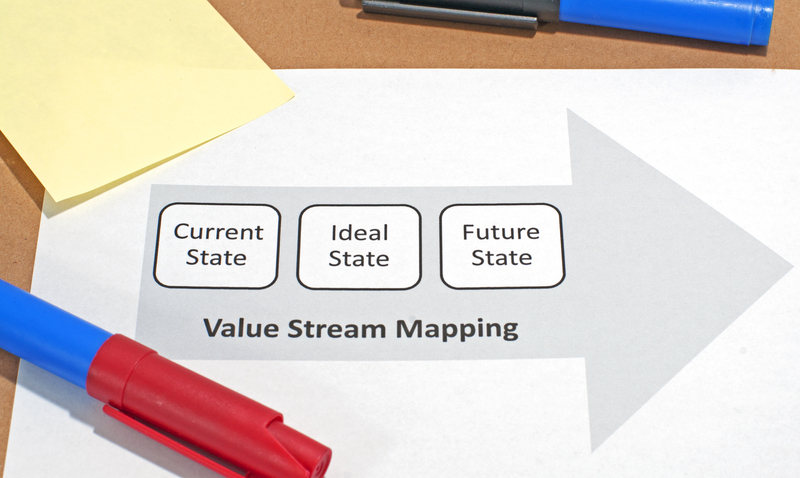 When to use Lean, Six Sigma, and Kaizen
When to use Lean, Six Sigma, and Kaizen
There are some managers and consultants that are religious about using a particular methodology, and too often stick to just what it has to offer. But as you probably know, everything in life comes with its own strengths and weaknesses. More importantly, there is nothing in the world that is absolutely suitable to every situation and problem. If that is true for everything else, it is quite logical to assume it is going to be true about business improvement and quality assurance methodologies. This is why the best managers realize that each methodology might be uniquely suited to given situations.
Because of those reasons, when looking into Lean, Six Sigma, and Kaizen, it would be a very good idea to not disqualify any of them, but to take the best of each approach, and adopt it to your company or organization.
Before you do this, you must have a good understanding of each methodology in order to be able to successfully determine when to use what. While this article will surely give you some basic guidelines to help you choose between Lean, Six Sigma, and Kaizen for a particular initiative, project or a problem, you should always seek out advice from experienced practitioners.
Level of Importance
The three improvement methodology that we are looking into in this article can all lead to significant improvements, but they require different levels of effort, time and resources, and each can produce different kinds of results and improve different types of metrics, as we discussed in our last post. Because of this fact knowing the business case or “burning platform” for the company will help you decide how much effort we can expend on improving it.
Kaizen is the approach that requires the least amount of effort, and is something that can be applied to absolutely everything. When non-essential processes require improvement, the best solution is often to apply Kaizen, which will allow the people involved in the process to start making changes for the better, without anybody being overly occupied with the task or risking a customer issue if an improvement doesn’t work. Incremental improvements will lead to satisfactory and measurable results over a longer period of time.
If the process is of higher importance to the business and its competitiveness, it might be a better idea to start involving more time-consuming methods like Lean and Six Sigma. Unlike the gradual improvement that Kaizen provides, both Lean and Six Sigma can lead to more rapid and more significant innovation, but require more involvement and more effort for them to be effective.
Level of Complexity
Another important factor that can help you decide between the three methodologies is how complex the process that needs to be improved or the problem that needs to be solved. More complex problems require more complex analysis and solutions. If the complexity seems to be of the highest order, Six Sigma is usually a fitting solution, because it employs more advanced statistical tools and problem solving structure that allows for the team to make sense of the complexity they are facing. Six Sigma is a data-driven methodology that can really drill down to the core of a problem, and the solutions can lead to significant impacts.
Lean can also deal with complexity, but it provides solutions on a more practical level, so it can provide improvement a bit faster but with a bit less depth.
Lastly, Kaizen doesn’t deal with complexity that well and it’s more suited to simpler problems that require simpler solutions.
It’s very important to notice that this doesn’t meant that Kaizen or Lean are a less valuable approach. They can’t deal with the level of complexity that Six Sigma does because they don’t require the same amount of effort. Often, a manager could go through all of the methodologies while solving a single problem. They could start with Kaizen and get some results quickly, then go through Lean to address a bit more complexity, and finally using Six Sigma to identify interactions and even more complex relationships within the process.
At Shmula, we suggest the following approach:
- Teach Kaizen to all employees to build up a problem solving culture, and increase employee engagement
- Identify an important area, and apply Lean to that focused area, then spread Lean to the rest of the organization
- When encountering difficult problems, implement Six Sigma on that specific problem, and then deploy Six Sigma concepts and thinking across the organization, but only after Lean is implemented
What do you think? Would this approach work for your organization?








I agree every situition must be assessed to decide the best approach but from my experience Lean is more a strategy than a simple tool and it’s focusto the Waste elimination across the stream of the operation, through the use of Value Stream Mapping, provides a snapshot diagnostic of the material and information flow from current state, then defining the ideal state allow the team to see what can be an achievable initial Future state, right theret can be defined the strategy which basically is outlined by identifying what are the projects/actions that are necessary to do to achieve that future state. Efforts are then turn into Kaizen workshops, 5S, problem solving, six sigma that will allow to remove roadblocks and get that future state.